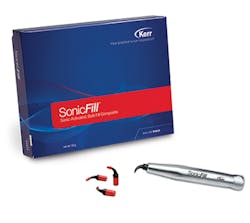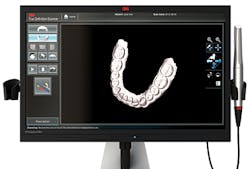The editors of Dental Economics are proud to introduce Joshua Austin, DDS, a general practicing dentist from San Antonio, Texas. Starting this month, Dr. Austin will begin authoring "Pearls for Your Practice," the monthly DE column made popular by Joseph Blaes, DDS. Here, Dr. Austin tells a little bit about himself ... and how some good advice helped him land the opportunity to write "Pearls."
Last week I was invited to speak to the incoming first-year dental students at the University of Texas Health Science Center Dental School in San Antonio. This is something I do almost every year and the speech is almost always the same. Get involved. Contribute to dentistry. Be passionate about what you do. Join the appropriate associations. All pretty standard advice, but necessary, nonetheless. These are all things that I took to heart when I was in dental school, and all things that have paid dividends throughout my career.
Of all the suggestions I made, joining the appropriate associations has been huge in my career. I told the students that the reason to join associations is to be a part of something bigger than you. In an association, you can network with colleagues from all over the world. And you never know who you might meet that could change your life. For me, it was the 2007 ADA New Dentist Conference in Portland, Oregon. I met a fast-talking, wisecracking, well-dressed New Yorker named Chris Salierno. Chris and I became fast friends and have stayed in close contact ever since. He called me early in the summer to tell me about his great opportunity as chief editor of Dental Economics. There couldn't be anyone who deserves this opportunity more than Dr. Salierno. He's as driven, motivated, and hardworking as anyone I know. He asked if I would be interested in contributing to the magazine. I told him I would help him in any way possible.
When he asked me to take over the "Pearls for Your Practice" column, I was floored. What an honor! Dr. Blaes has done such great work with this column over the years. I know I have my work cut out for me to achieve the success my predecessor had with this column. I honestly am a very average, everyday, practicing general dentist. I see patients four and a half days a week. I do everyday restorative dentistry. I see adults. I see kids. I do resin composites. I work in the same trenches all of you do every single day. I practice in a suburban area of San Antonio, Texas. My practice is probably very much like most of yours. When you read my review of a product, you can trust that it was used the same way you would use it ... directly, in real patient care.
I am in my ninth year of private practice after graduating from the University of Texas Health Science Center Dental School in San Antonio. I opened my own solo general practice in October of 2009 after associating for several years. I am involved in all levels of organized dentistry and hope to help keep this profession great for generations of dentists to come.
My hope is that this column can continue to be a reliable, interesting source of information for dentists looking for help in making decisions about dental equipment and supplies. I am always open to comments and questions from the readers of this column. I look forward to many years of continued professional service to you, the readers of Dental Economics.
Kerr SonicFill
Like most other general and restorative dentists, posterior resin composites are probably the most frequently done procedure in my office. In addition to being the most used procedure codes in my office, they are often among the most difficult and technique-sensitive procedures I perform. As much as I would love to eliminate resin composites from my repertoire in favor of more milled ceramic inlay and onlay restorations, that's just not feasible. Resin composites are still a useful and needed procedure for many dental patients. That being said, how can you be more efficient and achieve more predictable results with resin composites?
One solid way is with the Kerr SonicFill composite system. This system utilizes a specialized handpiece that hooks up to your delivery unit. After your chosen bonding steps, the handpiece "sonically delivers" composite from the attached compule into the preparation at your selected speed (1 to 5). The "sonic activation" changes the composite's viscosity as it is extruded into the preparation. This allows for increased adaptation to all areas of the preparation.
The composite material allows for bulk fill, up to 5 mm increments. No veneering layer is needed, as with some other bulk fill composites. Kerr recommends the use of SonicFill in any cavity class on posterior teeth. The SonicFill composite comes in only four shades, so you probably won't be using it on anterior teeth.
For me, Kerr SonicFill greatly speeds up the restoration process. In addition, since it can be bulk filled up to 5 mm, I do not often worry about voids between layers. The SonicFill composite finishes and polishes well ... consistent with other posterior composites on the market.
Pros: Decreased chair time on most posterior resin composite procedures, fewer voids in restorations, and adequate finishing and polishing.
Cons: Must purchase hardware (handpiece) and have an available slot in delivery system, and can only use Kerr SonicFill composite with the handpiece.
Final thoughts: Once you get the hang of it, you will notice a marked decrease in procedure time of resin composites. I hate being locked into using a certain brand of composite; however, I have no complaints about the SonicFill composite itself. To use a baseball analogy, I think the Kerr SonicFill is a solid, stand-up triple. It has become one of the items that I would have a hard time doing without in my practice.
Using the 3M True Definition scanner with Invisalign
When 3M rolled out their True Definition Scanner, I was the first dentist in the U.S. to have one delivered. The True Def is the successor to 3M's first scanner effort, the Lava Chairside Oral Scanner. During the pitch, Sarah (my 3M sales rep) claimed over and over that agreements with companies like Biomet 3i and Straumann and Invisalign were forthcoming, and that I would be able to use the scanner for all sorts of things in the coming months.
As we all know, sales reps say a lot of things that may or may not ever come to pass. The last thing I expected was for all these connections to become reality, including a partnership between 3M True Def scanner and Invisalign. Invisalign also owns Cadent, the maker of iTero. I guessed that Invisalign would want to push clinicians in the direction of their scanner, not open up to the others. Guess who was wrong? Me!
The first "workflow" on my True Def that I used, other than for traditional fixed prosthodontics, was for Invisalign. In order to scan Invisalign cases, clinicians must go through a training protocol with 3M. A total of five practice scans must be submitted to the 3M training lab, which are then reviewed. Once certified, the ability to submit scans to Invisalign is turned on remotely by 3M. The scanning itself is not any different than any other scan. Obviously a full mouth scan is required. All the surfaces of all the teeth should be captured along with 2 to 3 mm of gingiva. Once everything is captured, the scan is submitted to Invisalign. After the scan is uploaded, a prescription can be entered at the Invisalign website like normal.
Once 3M clears you to submit scans, the company notifies Invisalign that you are scanning-ready. When you submit your Invisalign prescription, a new page opens that asks if you are submitting by scan or PVS impression. If submitting by scan, you select that option. The Invisalign system will automatically retrieve the scan. Finish your prescription like normal, and you're done!
I've noticed that ClinChecks from scans usually come back in about two days, which is much faster than with PVS impressions. Aligner fit seems to have improved as well. Better aligner fit should mean more predictable movements and finishes. I think that this is a strong addition to the repertoire of the 3M True Definition Scanner.
Pros: Quick ClinCheck turnaround, better-fitting aligners, less expensive than iTero
Cons: Some learning curve to getting good full-mouth scans, powder required
Final thoughts: If you already have a True Def scanner and are an Invisalign provider, this is a no-brainer. If you don't have a scanner and are looking to buy one just for Invisalign, the price point of the True Def is better than that of the iTero. Using a scanner you already bought for indirect fixed restorations for Invisalign and getting good results is a homerun! To add to the benefits of using this system and the connections that come along with it, 3M just announced a major upgrade that includes a new, even smaller and faster wand, along with new scanning software. Look for the upgrade to be available this fall.









